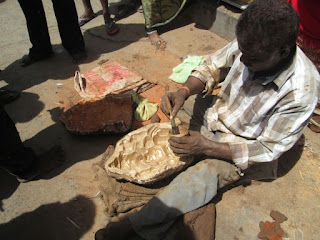Each year Navratri commences on the first day (pratipada) of the bright fortnight of the lunar month of Ashvin. The Navratri festival or 'nine day festival' becomes a 'ten days festival' with the addition of the last day, Vijaya-dasami (day of victory) as its culmination. The 2016 nine day Festival of Navratri started on Saturday, October 1st and will complete on Sunday, October 9th, 2016.
A legend explaining the origin of Navratri is that Adi Shankaracharya gave upadesa at two primary locations during the installation of a Sri Chakra at Srisailam (Andhra Pradesh) and at Koolurmugambika (Karnataka). At the time of the installations he directed women folk to worship the Goddess and seek her blessings for wealth, prosperity and long life for their husbands and overall happiness in the family.
This Festival is celebrated in a wide variety of ways, depending on region, local history and family influences. Some see it as a way to commune with one’s own feminine divinity. A widespread practice honours the Goddess in every woman by inviting young girls to the family's home, feeding them and offering new clothes. During the Festival, women also perform tapas and selfless acts.
Families in Tamil Nadu traditionally prepare in their homes a kolu, an exhibition of small dolls, figurines and small artifacts on a stepped, decorated shelf. At least one murti of Shakti must be present, as well as wooden figurines of a boy and a girl together to invoke auspicious marriages.
In South India the Goddess is worshipped in three forms. During the first three nights, Durga is revered, then Lakshmi on the fourth, fifth and sixth nights, and finally Saraswati until the ninth night. Durga ("invincible" in Sanskrit) is the epitome of strength, courage and ferocity. Her devotees approach Her, sometimes with difficult penances, for those qualities and for the protection she Bestows.
A more gentle worship is observed for Lakshmi also called Annapurna "Giver of food," Lakshmi is the Goddess of abundance, wealth and comfort. She is the ever-giving mother, worshipped for well being and prosperity. A traditional way of invoking Her is chanting the Sri Suktam. In Her honour, food is prepared and offered to neighbours and all who visit, thus strengthening community ties. On the full moon night following Navratri, it is believed Lakshmi Herself visits each home and replenishes family wealth.
The last three days of Navratri, exalt Saraswati, the form of Shakti personifying wisdom, arts and beauty. Her name literally means "flowing one", a reference to thoughts, words, music and the Saraswati River. Mystically Saraswati is believed to be the keeper of the powerful Gayatri Mantra, which is chanted during the festival to invoke Her supreme blessings. Devotees meditate for days on this mantra alone, as it is considered the door to divine wisdom.
Tiruvannamalai has many beautiful Temples dedicated to the Divine Mother and the photographs of this posting are of alangarams of the Shakti Goddess during the first five days of Navratri at: Arunachaleswarar Temple, Durga Amman Temple, and Kamakshi Amman Temple.
 |
| Parakshakthi Amman at Arunachaleswarar Temple |
 |
| Aarti is offered to the Goddess |
 |
| Goddess Gajalakshmi |
 |
| Goddess Gajalakshmi is offered aarti |
 |
| Goddess at Tiruvannamalai Shakti Temple |
 |
| Goddess at Tiruvannamalai |
 |
| Goddess on Kamadhenu at Durga Amman Temple |
















































